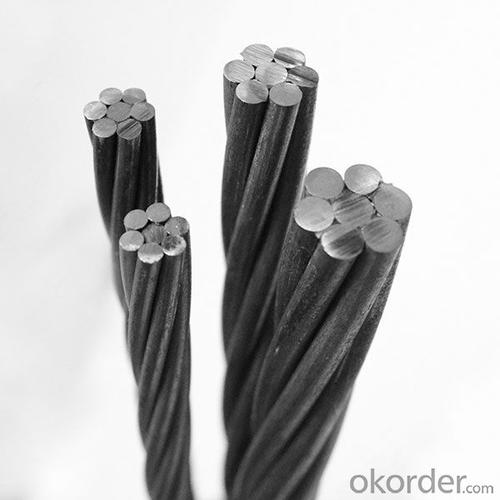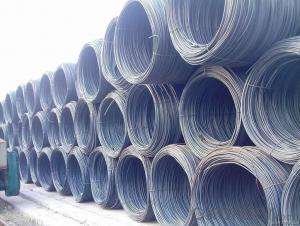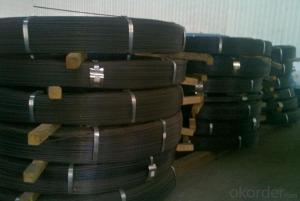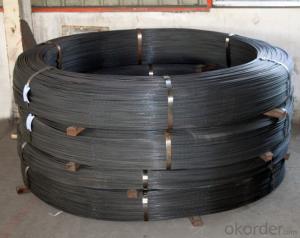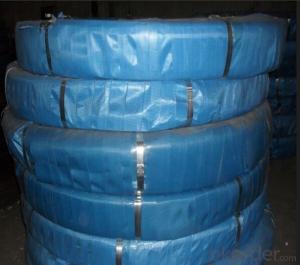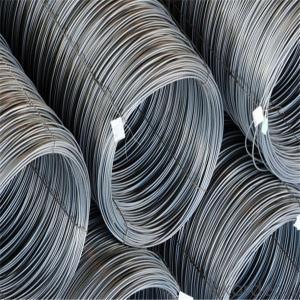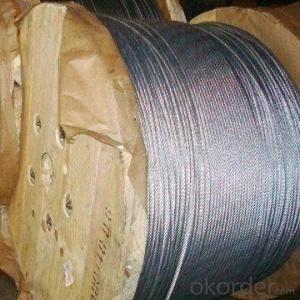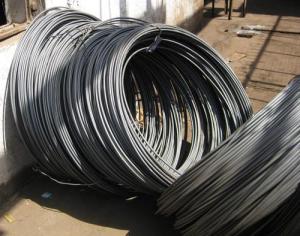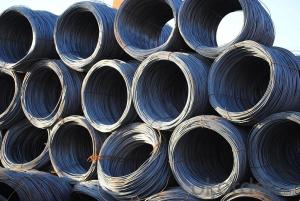Steel Strand for Prestressed Concrete PE Coated PC Strand Steel Wire
- Loading Port:
- Tianjin
- Payment Terms:
- TT or LC
- Min Order Qty:
- 25 m.t.
- Supply Capability:
- 1000 m.t./month
OKorder Service Pledge
OKorder Financial Service
You Might Also Like
Steel Strand for Prestressed Concrete PE Coated PC Strand Steel Wire
Features
- Superior corrosion resistance
- Higher life expectancy
- Unmatched durability
Application:
mainly used in vairous shapes of tensioning prestressed concrete structures, such as bridges of large-scale railroads and highways, frame of roofs, overhead crane beams,industrial and civil prefabricated concrete slabs, wall boards,tubular piles, PC water pipes, TV towers and nuclear power stations, etc.
Surface Finishes: plain and ribbed.
Standards: GB/T5223, ASTM A416, BS5896, JISG3536, ISO6934, EN10138 and the agreed standards.
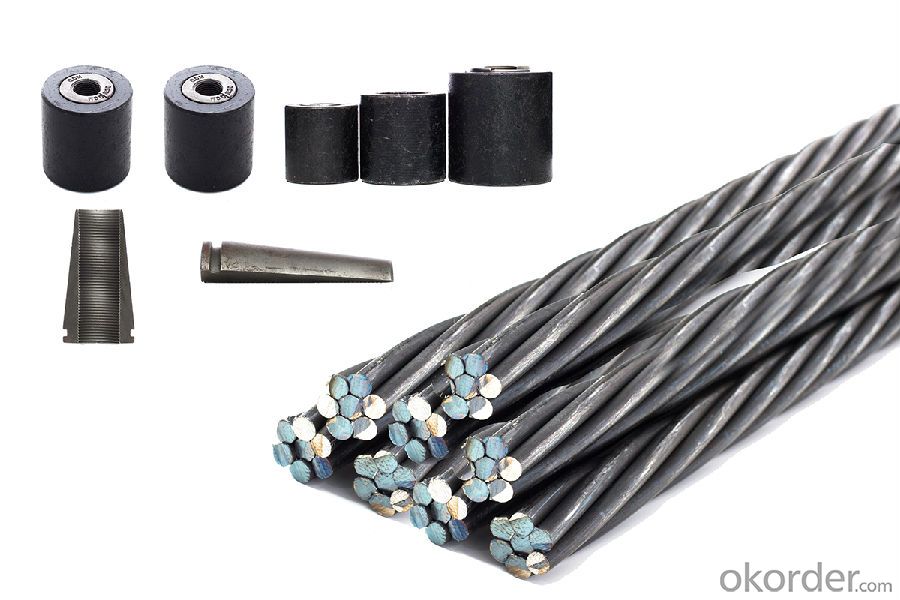
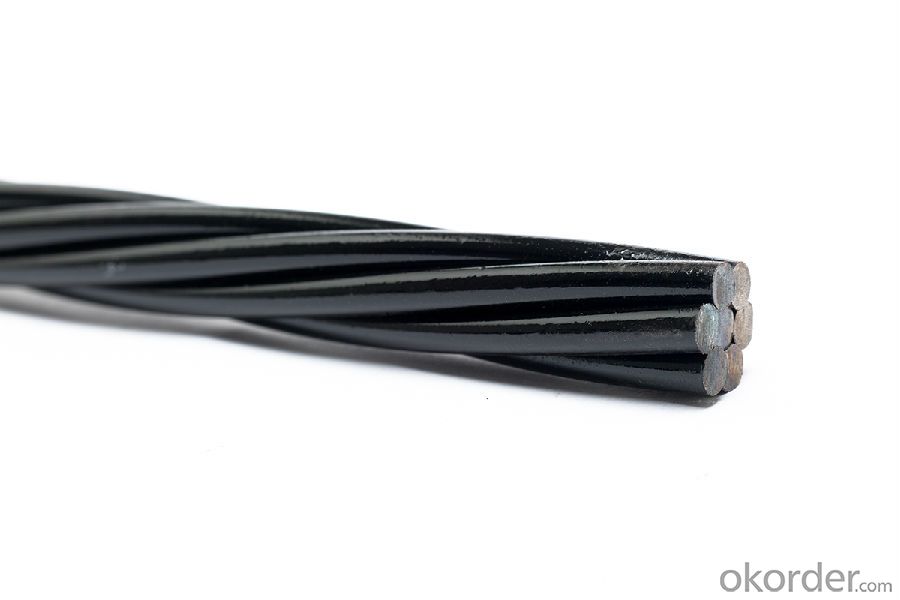
- Q: What are the main regions for steel wire rod production?
- The main regions for steel wire rod production are Asia, Europe, and North America. Asia is the largest producer of steel wire rod, with countries like China, Japan, and India leading the way. China, in particular, holds the largest share of global steel wire rod production, thanks to its vast steel industry and strong domestic demand. Japan is another significant player in Asia, known for its advanced technology and high-quality steel products. India has also emerged as a major producer in recent years, driven by its growing infrastructure and construction sectors. In Europe, countries like Germany, Italy, and France are prominent steel wire rod producers. Germany has a long history of steel manufacturing and is known for its expertise in producing high-quality steel wire rod. Italy is also a significant player, specializing in stainless steel wire rod production. France, on the other hand, benefits from its strategic location and serves as a hub for steel wire rod distribution in Europe. North America is another important region for steel wire rod production, with the United States and Canada as key players. The United States has a well-established steel industry and is known for its advanced production techniques. Canada, although not as large a producer as the United States, still contributes significantly to the North American market. Overall, these regions dominate the steel wire rod production globally, with each having its own strengths and specialties. The demand for steel wire rod continues to grow, driven by various industries such as automotive, construction, and manufacturing, ensuring a strong market for these regions.
- Q: What are the different types of steel wire rod surface defects after wire drawing?
- There are several different types of steel wire rod surface defects that can occur after wire drawing. Some common examples include scratches, pits, scale, cracks, and uneven surfaces. These defects can affect the quality and performance of the wire, so it is important to identify and address them in order to ensure the desired product quality.
- Q: What are the common heat treatment processes for steel wire rod?
- There are several common heat treatment processes for steel wire rods, each serving a specific purpose in improving the properties and characteristics of the material. These processes include annealing, quenching, tempering, and normalizing. 1. Annealing: This process involves heating the steel wire rod to a specific temperature and holding it there for a certain duration, followed by controlled cooling. Annealing helps to reduce the hardness and brittleness of the wire rod, improving its ductility and machinability. 2. Quenching: Quenching is a rapid cooling process that involves immersing the heated wire rod into a quenching medium, such as oil or water. This process rapidly hardens the wire rod, increasing its strength and hardness. However, it also makes the material more brittle. 3. Tempering: Tempering is performed after quenching to reduce the brittleness and relieve the internal stresses in the wire rod. It involves heating the quenched wire rod to a specific temperature and holding it there for a certain period, followed by controlled cooling. Tempering enhances the toughness and ductility of the wire rod while maintaining a desirable level of strength. 4. Normalizing: Normalizing is a heat treatment process similar to annealing, but with a slightly different cooling process. It involves heating the wire rod to a specific temperature above its transformation range and allowing it to cool in still air. Normalizing refines the grain structure of the material, improving its mechanical properties and reducing internal stresses. These heat treatment processes can be combined and modified to achieve specific desired properties for steel wire rods. The choice of heat treatment process depends on factors such as the desired mechanical properties, intended application, and the type of steel being treated.
- Q: How is steel wire rod used in the manufacturing of reinforcing bars?
- Rebar, also known as reinforcing bars, is manufactured using steel wire rod. This essential component is widely used in the construction industry to enhance the strength and durability of concrete structures. The manufacturing process of reinforcing bars involves several steps. Initially, the wire rod is cleansed to eliminate impurities and contaminants. It is then heated and passed through a series of rollers to achieve the desired diameter and shape, a process known as hot rolling. Once the wire rod is shaped, it undergoes cooling and a process called quenching and tempering. This involves rapidly cooling the steel to increase its hardness and strength, followed by tempering to decrease brittleness and improve toughness. This heat treatment procedure ensures that the reinforcing bars possess the necessary mechanical properties to withstand the forces and stresses they will encounter during construction. After shaping and heat treatment, the wire rod is cut into specific lengths to produce individual reinforcing bars. These bars can be further processed by fabrication into various shapes, such as straight bars, bent bars, or stirrups. Alternatively, they can undergo threading or welding, depending on the specific requirements of the construction project. The utilization of steel wire rod in the manufacturing of reinforcing bars is vital as it provides the strength and structural integrity needed to reinforce concrete structures. The wire rod's high tensile strength enables the reinforcing bars to resist forces such as tension, compression, and bending, thereby enhancing the overall strength and stability of concrete structures. Furthermore, the wire rod's ductility and toughness contribute to the rebar's ability to absorb and distribute stress, preventing cracks and failures in the concrete. In conclusion, steel wire rod plays a crucial role in the manufacturing of reinforcing bars. Through shaping, heat treatment, and fabrication, it ensures that the resulting reinforcing bars possess the required strength, durability, and mechanical properties to effectively reinforce concrete structures.
- Q: How is steel wire rod used in the manufacturing of piano wire?
- Steel wire rod is an essential material used in the manufacturing of piano wire due to its strength, durability, and flexibility. Piano wire, also known as music wire, is a high-tensile steel wire that is primarily used in the construction of piano strings but also finds application in various other industries such as aerospace, automotive, and medical. To produce piano wire, steel wire rod is first subjected to a series of manufacturing processes. The rod is cleaned and descaled to remove any impurities or surface contaminants. It is then heated to a specific temperature to improve its malleability and make it easier to work with. Next, the steel wire rod is drawn through a series of dies to gradually reduce its diameter. This process, known as wire drawing, involves pulling the rod through a die with a smaller hole size, which elongates and thins the rod while increasing its strength and tensile properties. This drawing process is repeated multiple times until the desired wire thickness is achieved. Once the desired thickness is obtained, the wire is further heat-treated to enhance its mechanical properties. This heat treatment process, known as patenting, involves heating the wire to a specific temperature and then cooling it rapidly to increase its strength, elasticity, and resistance to deformation. After the patenting process, the wire is carefully inspected for any defects or imperfections. Any flawed wire is discarded to ensure the final product maintains the highest quality standards. The resulting steel wire, now in the form of piano wire, possesses exceptional tensile strength, allowing it to withstand the high tension required for piano strings. Its inherent flexibility enables it to vibrate freely, producing the rich and resonant tones associated with high-quality pianos. In summary, steel wire rod is a critical component in the manufacturing of piano wire due to its strength, durability, and flexibility. Through a series of manufacturing processes such as cleaning, heating, wire drawing, and heat treatment, the wire rod is transformed into a high-tensile steel wire that can withstand the demanding requirements of piano strings.
- Q: What are the common cutting methods for steel wire rod?
- The common cutting methods for steel wire rod include shearing, sawing, and flame cutting.
- Q: What are the main properties of steel wire rod?
- The main properties of steel wire rod include high tensile strength, excellent ductility, and good corrosion resistance. It also has good thermal conductivity and is highly malleable, making it easy to shape and form. Additionally, steel wire rod has a high melting point and is often used in various applications such as construction, manufacturing, and automotive industries.
- Q: How is steel wire rod used in the manufacturing of wire shelves?
- Steel wire rod is used in the manufacturing of wire shelves as it serves as the primary raw material. The wire rod is first formed into the desired shape and size, and then further processed to create the wire mesh that forms the shelves. The strength and durability of steel wire rod make it an ideal material for wire shelves, as it can support heavy loads and withstand daily wear and tear.
- Q: What is the manufacturing process of steel wire rod?
- The manufacturing process of steel wire rod involves several steps. Firstly, iron ore is extracted and processed to obtain iron. This iron is then melted in a furnace along with other materials like limestone and coke. The molten iron is then refined to remove impurities and adjusted to achieve the desired chemical composition. Next, the refined iron is cast into billets or blooms, which are then reheated and passed through a series of rolling mills. These mills gradually shape and reduce the cross-section of the billets into long, thin strands called wire rod. After the initial rolling process, the wire rod is further processed through heat treatment to enhance its mechanical properties. This involves cooling the wire rod at a controlled rate to achieve specific levels of hardness and strength. Finally, the wire rod is coiled and packaged for shipment to various industries where it can be further processed into various steel products like nails, screws, wire mesh, and reinforcement bars.
- Q: What are the major steel wire rod consuming countries?
- The major steel wire rod consuming countries include China, the United States, Japan, India, and South Korea.
Send your message to us
Steel Strand for Prestressed Concrete PE Coated PC Strand Steel Wire
- Loading Port:
- Tianjin
- Payment Terms:
- TT or LC
- Min Order Qty:
- 25 m.t.
- Supply Capability:
- 1000 m.t./month
OKorder Service Pledge
OKorder Financial Service
Similar products
Hot products
Hot Searches
Related keywords


